How to make Guatemalan coffee beans? A step-by-step course on hand brewing of Guatemalan coffee
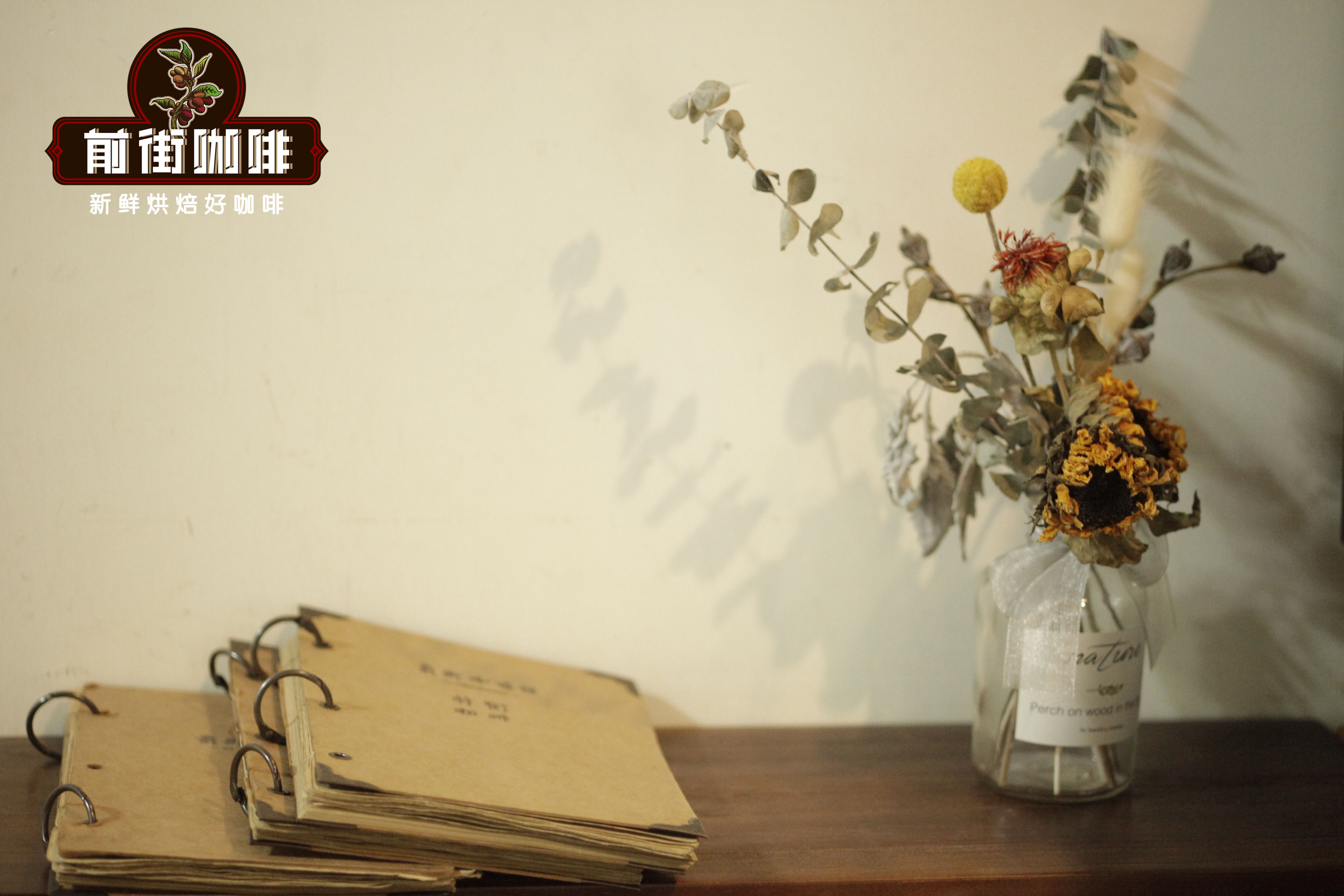
Professional coffee knowledge exchange more coffee bean information please follow the coffee workshop (Wechat official account cafe_style)
As one of the famous coffee producing areas in Latin America, Guatemala's coffee flavor also has Latin American unique nut cocoa, not only that, because the coffee growing area of Guatemala has fertile volcanic soil, so the aftertaste of coffee beans will also be a little smoky, very special, so it has also captured the hearts of many coffee lovers. But many coffee lovers who make their own Guatemalan coffee beans at home will ask why the front street coffee can not brew out the flavor of Guatemalan coffee beans, which is different from the flavor drunk in coffee shops. What is the problem? Well, in the next article, Qianjie Coffee will come to popular science to see how Guatemalan coffee beans can be flushed out of their proper flavor.
Qianjie Coffee is exemplified by the most representative Antigua Coffee beans in Guatemala.
Front street coffee Guatemala Antigua flower god coffee beans
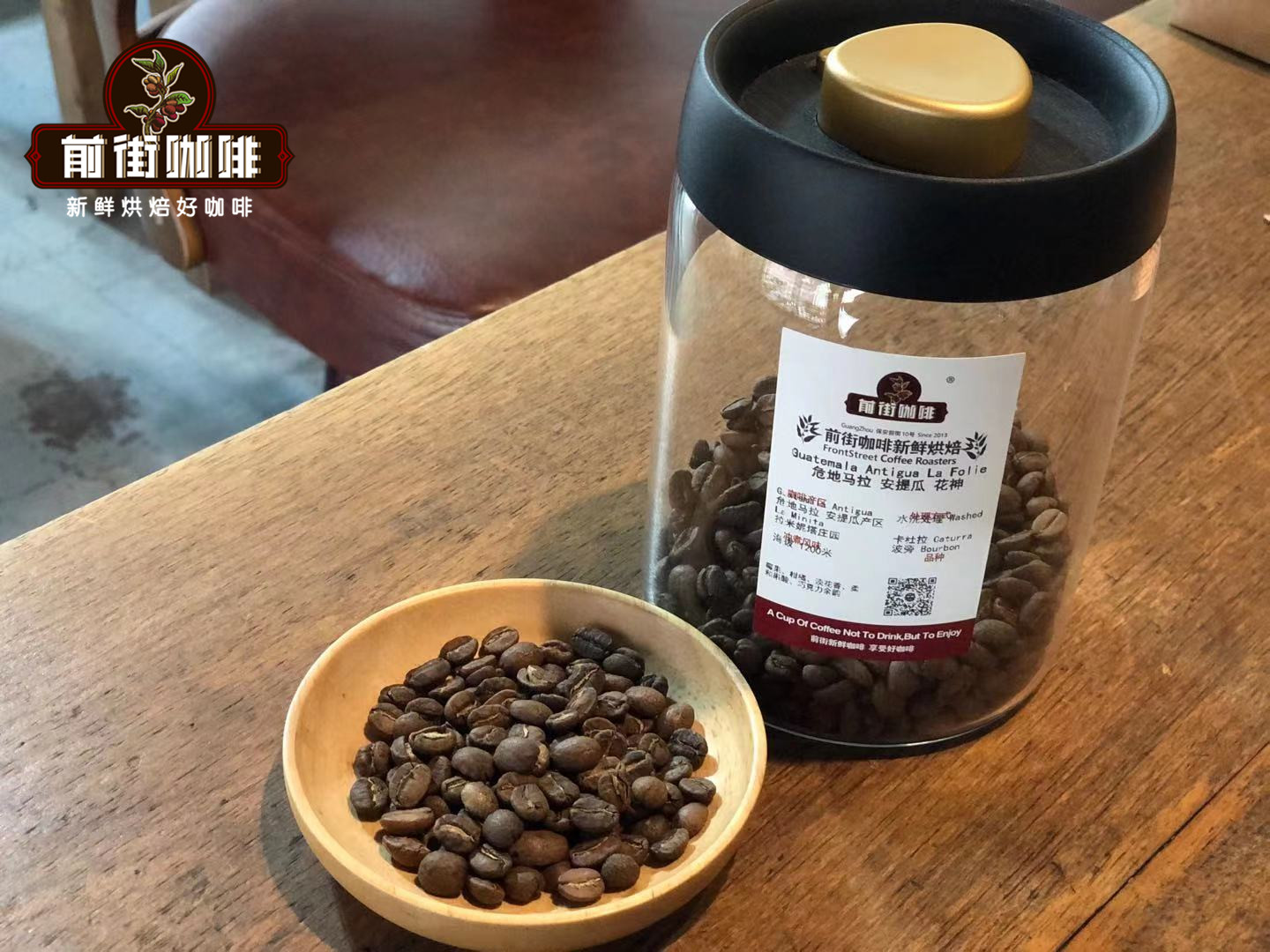
Country: Guatemala
Producing area: Antigua (La Minita Raminita Manor)
Altitude: 1200-1600m
Variety: bourbon, Kaddura, Kaduai
Treatment: washing treatment
Flavor: citrus acid, bright fruit acid, caramel, slightly smoky.
The reason why Qianjie Coffee uses this coffee bean for popular science is because it comes from Antigua, the most famous coffee producing area in Guatemala, which is the first producing area to grow coffee trees in the country. Antigua is located in a valley surrounded by three volcanoes (Agua, Fuego, Acatenango), and it is a closed valley, which avoids serious erosion of soil here, among which Volcan Fuego is an active volcano with unscheduled eruptions. The soil that causes this producing area is rich in minerals. Very suitable for the growth of Arabica coffee trees.
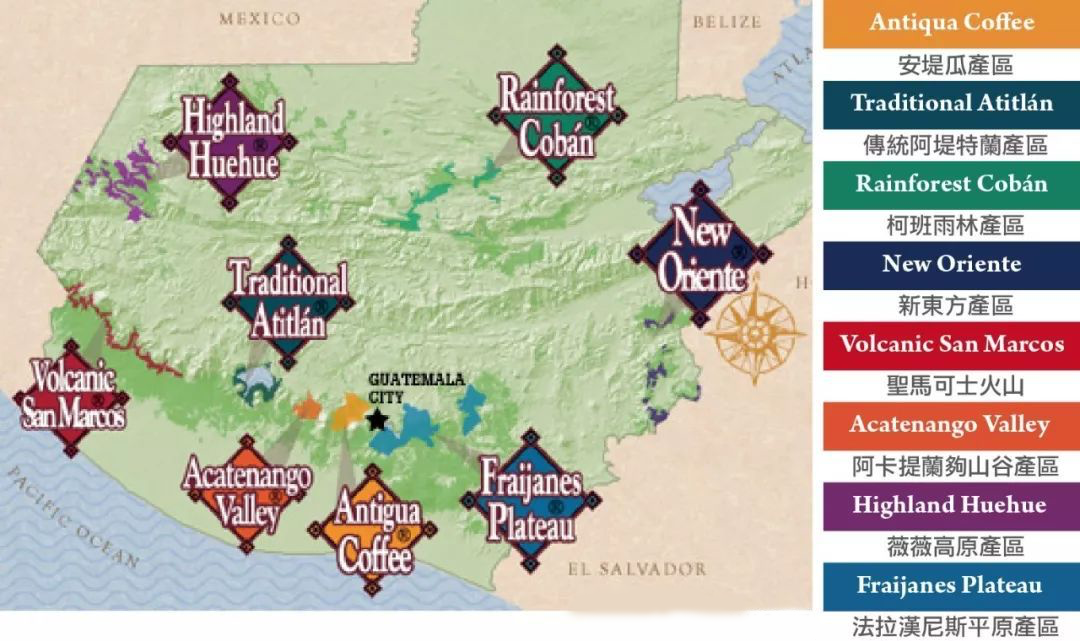
Guatemala Antigua flower god coffee bean variety
Secondly, the coffee variety used in this coffee bean is also the most widely cultivated coffee bean variety in Latin America, and it can best reflect the flavor of Guatemalan coffee beans, while Bourbon, Kaddura, and Kaduai are all derived from bourbon varieties, so the sweetness in the flavor performance is also more obvious. Next, Qianjie Coffee will introduce the characteristics of these three coffee varieties respectively.
Bourbon
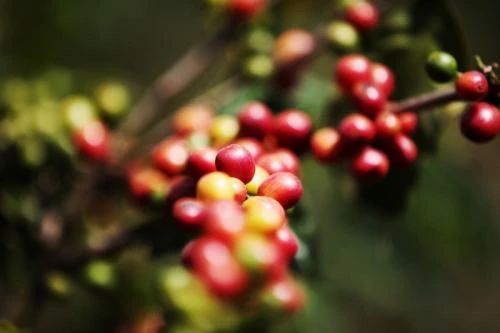
Bourbon coffee was originally grown on the island of Reunion, which was also known as bourbon before 1789. Bourbon coffee is derived from a natural variant of Tibica coffee derived from Arabica and is the oldest coffee variety in existence.
Generally speaking, bourbon coffee mainly changes from green fruit to ripe bright red fruit, which is known as "red bourbon". The fruit is relatively short and round, also known as round bourbon, with high density of pulp and seeds, high sweetness and bright acidity, but in addition to red bourbon, there are yellow bourbon and rare orange bourbon and rare species pink bourbon. Red bourbon.
Kaddura
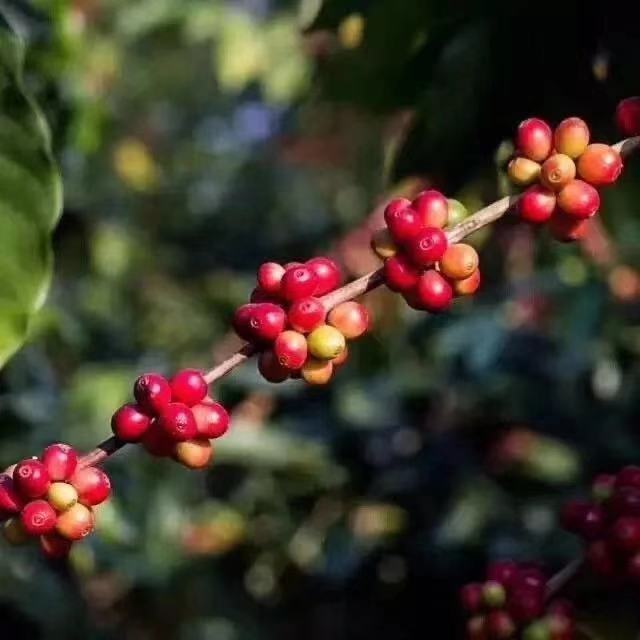
Kaddura, a single gene variant of bourbon, was found in Brazil in 1937. It has better production capacity and disease resistance than bourbon, and the tree is shorter and easy to harvest. Unfortunately, like bourbon, it has the periodic problem of production capacity fluctuation every two years. But its flavor is comparable to or slightly worse than bourbon beans, more importantly, it is super adaptable, it does not need shade trees, and it can also be vibrant in direct exposure to the sun. it is commonly known as exposure coffee, which can adapt to high-density planting, but it must be fertilized more and increase the cost. therefore, the acceptance of coffee farmers is not high in the initial stage.
Kaduai
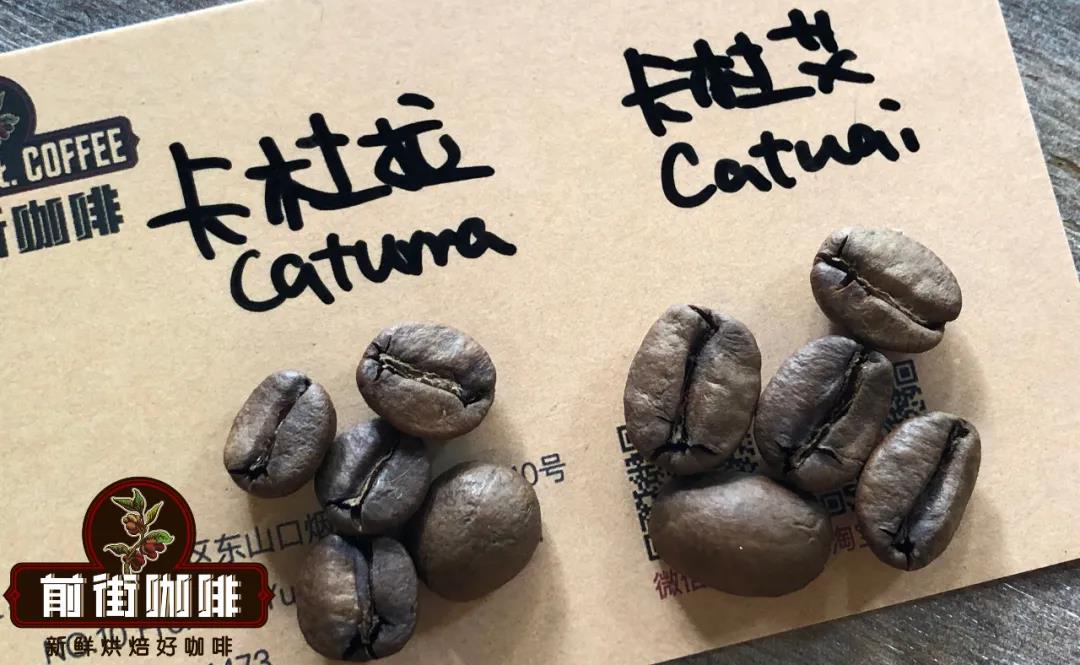
Kaduai is a hybrid of Arabica and Kaddura (New World). It has a good ability to resist natural disasters, especially wind and rain. It inherits the advantages of Kaddura's low stature and changes Mondonwood's shortcomings. Another advantage is that the result is solid, and it is not easy to fall off when the strong wind blows, which makes up for the weakness of Arabica fruit, but the overall flavor is more monotonous than Kaddura, monotonous and less mellow, which is the greatest pity. In addition, the fruit growth and harvest life is only about ten years, and the short life span is also one of the weaknesses.
Antigua flower god coffee bean treatment method in Guatemala
According to Qianjie Coffee, it is known that this Hua Shen coffee bean is a brand of La Minita Raminita, which has a good reputation for the handling and quality control of raw beans, so when developing this Hua Shen coffee bean, it provided the industry's highest standard of planting and processing technology to the Raminita estate in the Antigua producing area of Guatemala, and directly sent personnel to Guatemala to participate in quality control.
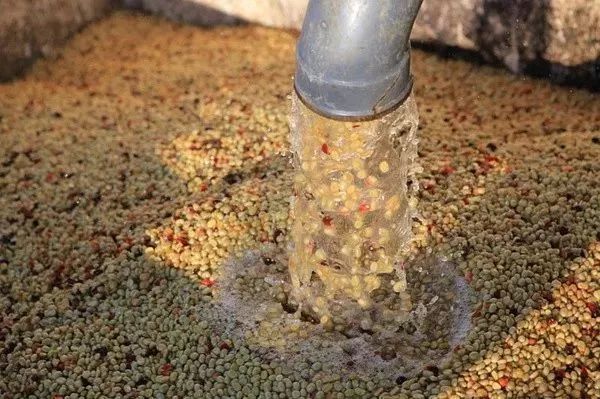
The coffee bean was entrusted to Las Pastores, the largest and most famous washing plant in Antigua, to deal with raw beans. The coffee flavor processed by this washing plant has a strong aroma of flowers and tea, and it is also rich in acidity and excellent sweetness after import, and the taste is clean and refreshing, so Laminita named this coffee bean "Flower God" for production and sales.
And such flavor performance should also benefit from excellent water washing treatment, because the special feature of water washing treatment is that it can make the flavor of coffee beans brighter and cleaner, and it is also the treatment method that can best reflect the most primitive flavor of coffee beans. Huashen coffee beans are treated with water washing treatment when their own quality is good, which is the icing on the cake.
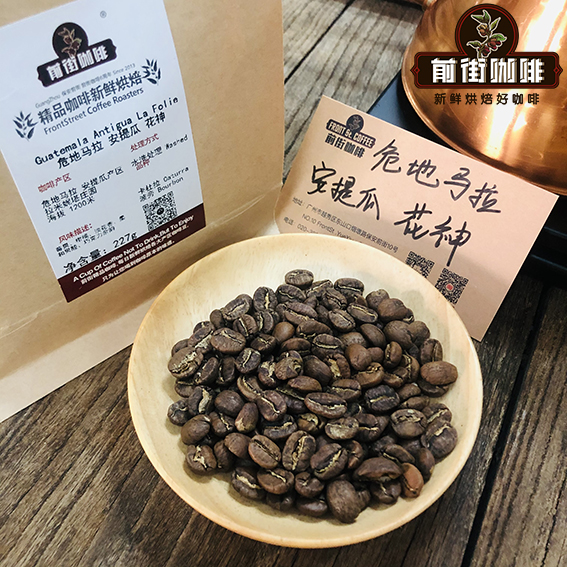
From the above, the Guatemala Antigua Coffee introduced in the front street coffee shop is really of good quality, so how to make its coffee flavor correctly? Next, Qianjie Coffee will show you how to brew Guatemalan coffee beans.
A step-by-step course on hand brewing of Guatemalan coffee
Qianjie Coffee thinks that in order to make a good pot of coffee, it mainly starts from these four aspects: water temperature, grinding thickness, powder-to-water ratio, brewing method.
1. Water temperature
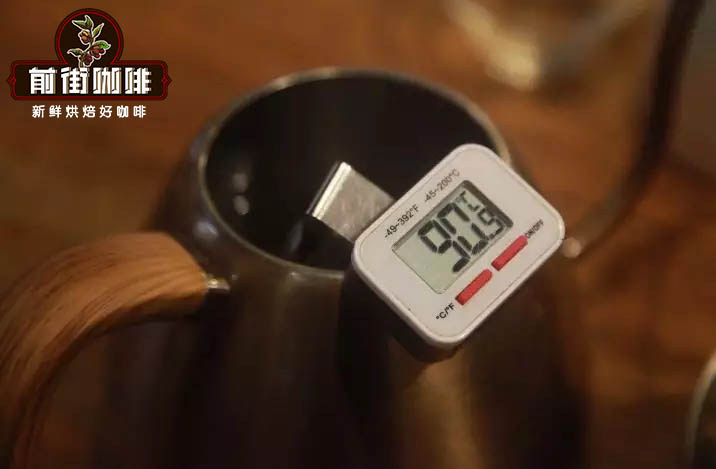
Qianjie coffee will also choose different water temperature when hand-flushing coffee beans with different roasting degrees. When roasting, the substances in the coffee beans are lost with the deepening of the roasting degree, so the deep-roasted coffee beans will lower the temperature in order to avoid extracting too much odor. It is recommended to choose a water temperature of 90-91 ℃ for medium-light baked beans Qianjie coffee and 87-89 ℃ for medium-deep roasted pwn.
For example, this Guatemalan Flower God coffee bean flavor is mainly citrus, fruit acid-based, Qianjie coffee in order to highlight this feature, will use medium roasting to deal with it, so its brewing water temperature Qianjie coffee will be controlled at 90-91 ℃.
2. Degree of grinding
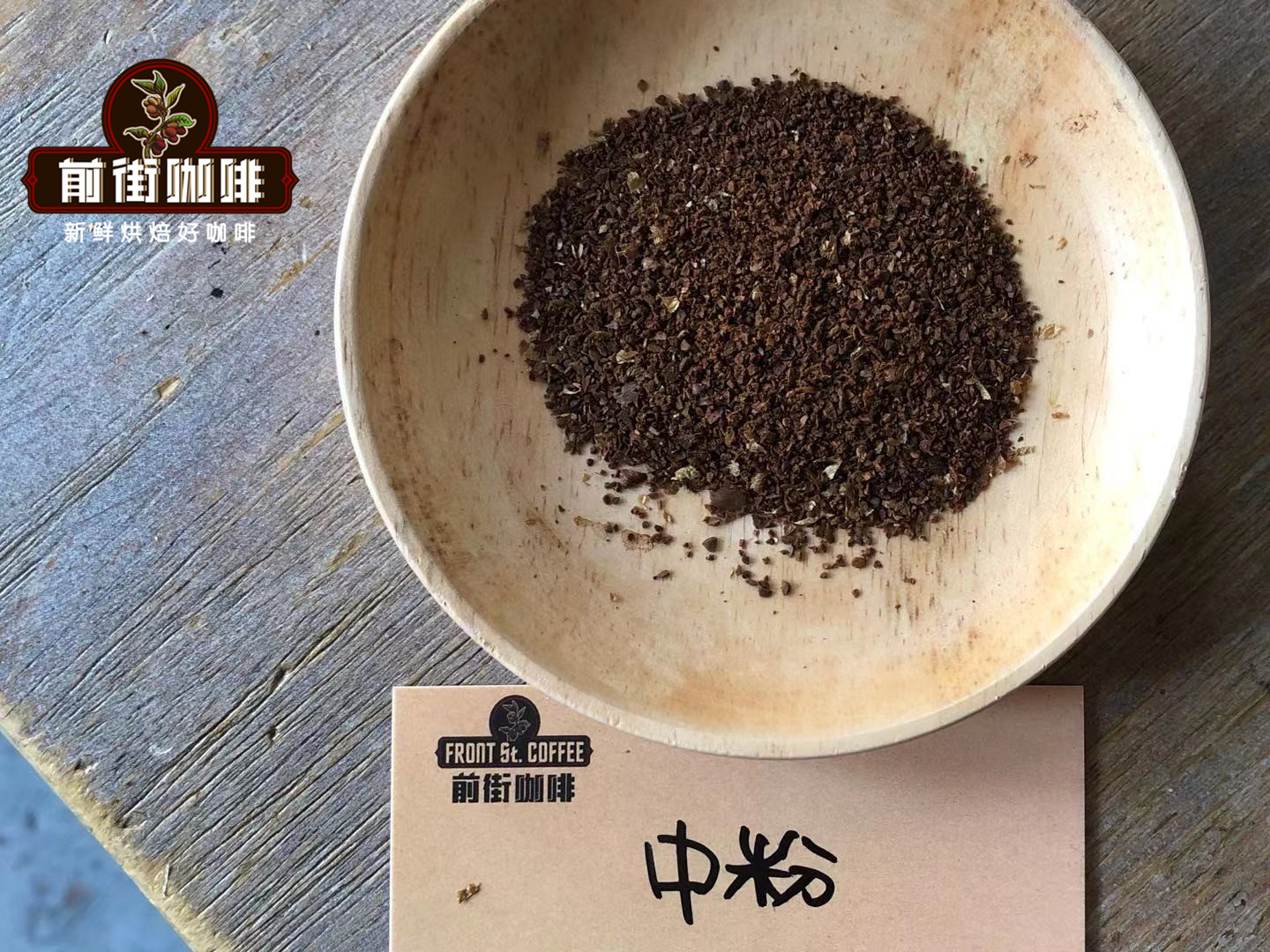
The degree of grinding refers to the size of coffee particles, because the degree of grinding will affect the contact time between coffee and water. If the coffee powder is finer, the water can extract more substances in the same time, but the degree of grinding is fine, the coffee is easy to be extracted in the process of extraction; on the contrary, the coarser the degree of grinding of coffee, the less substances extracted by water in the same time, but the coarser the degree of grinding is, the coffee is prone to insufficient extraction.
In addition, because the grinder in everyone's hand is different, so the parameters are also different, here Qianjie suggests that we buy a No. 20 cup test and correction screen, screen aperture 0.85mm, we make 10g coffee beans, adjust a rough grinding degree to grind coffee powder, and then pour it into the sieve to weigh the coffee powder (be sure to sift to the point that no coffee powder can be sifted out to complete the screening).
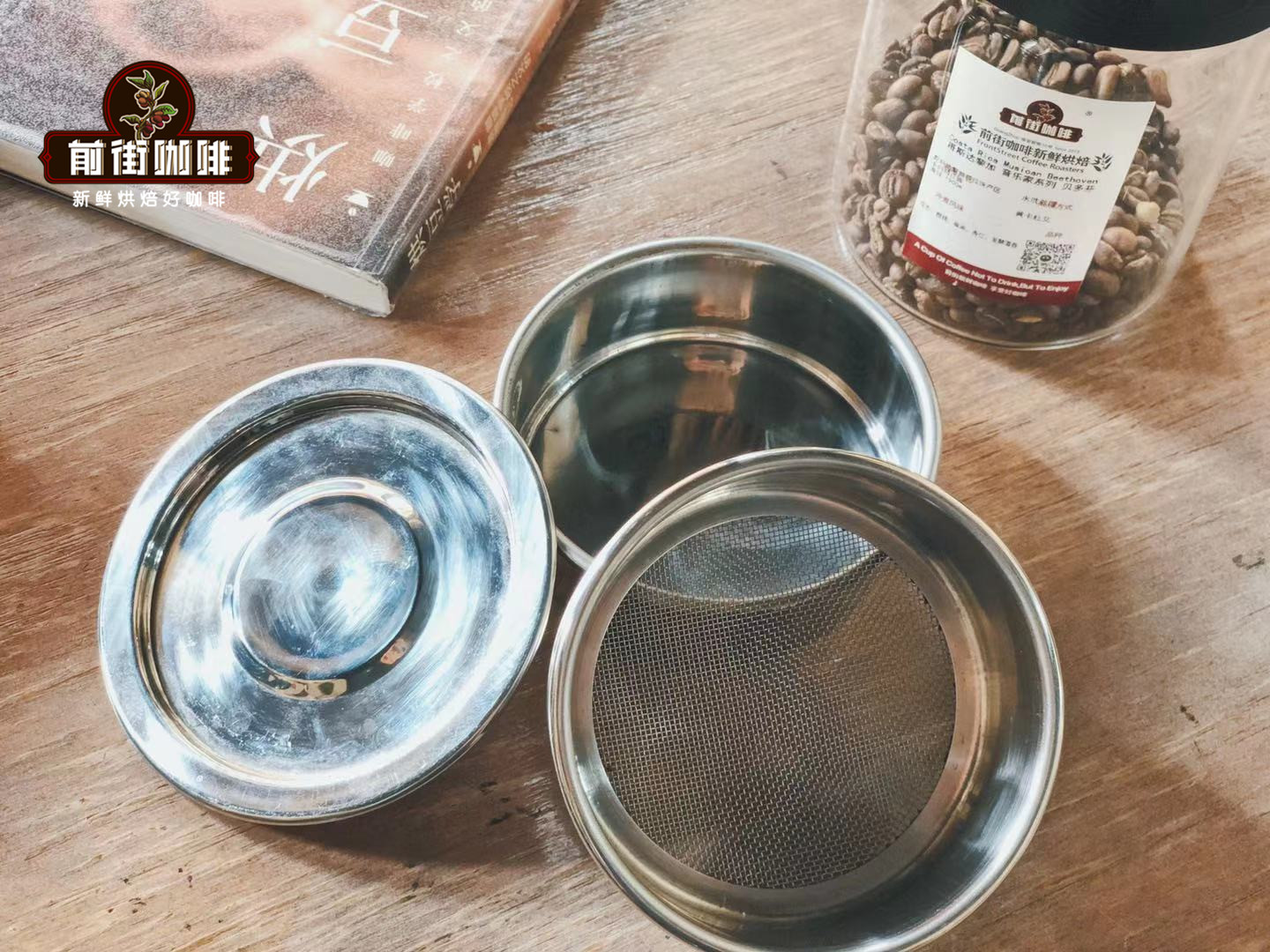
The screening pass rate of 80% (10g powder can screen 8g) is the most suitable grinding degree for medium-shallow roasted coffee beans, while the medium-deep baking grindability is 70%, 75% (10g sieve 7-7.5g). If it exceeds the suitable screening rate, it is appropriate to adjust the coarse grinding degree, and if it does not reach the appropriate screening rate, it is necessary to reduce the grinding degree properly.
3. Powder-water ratio
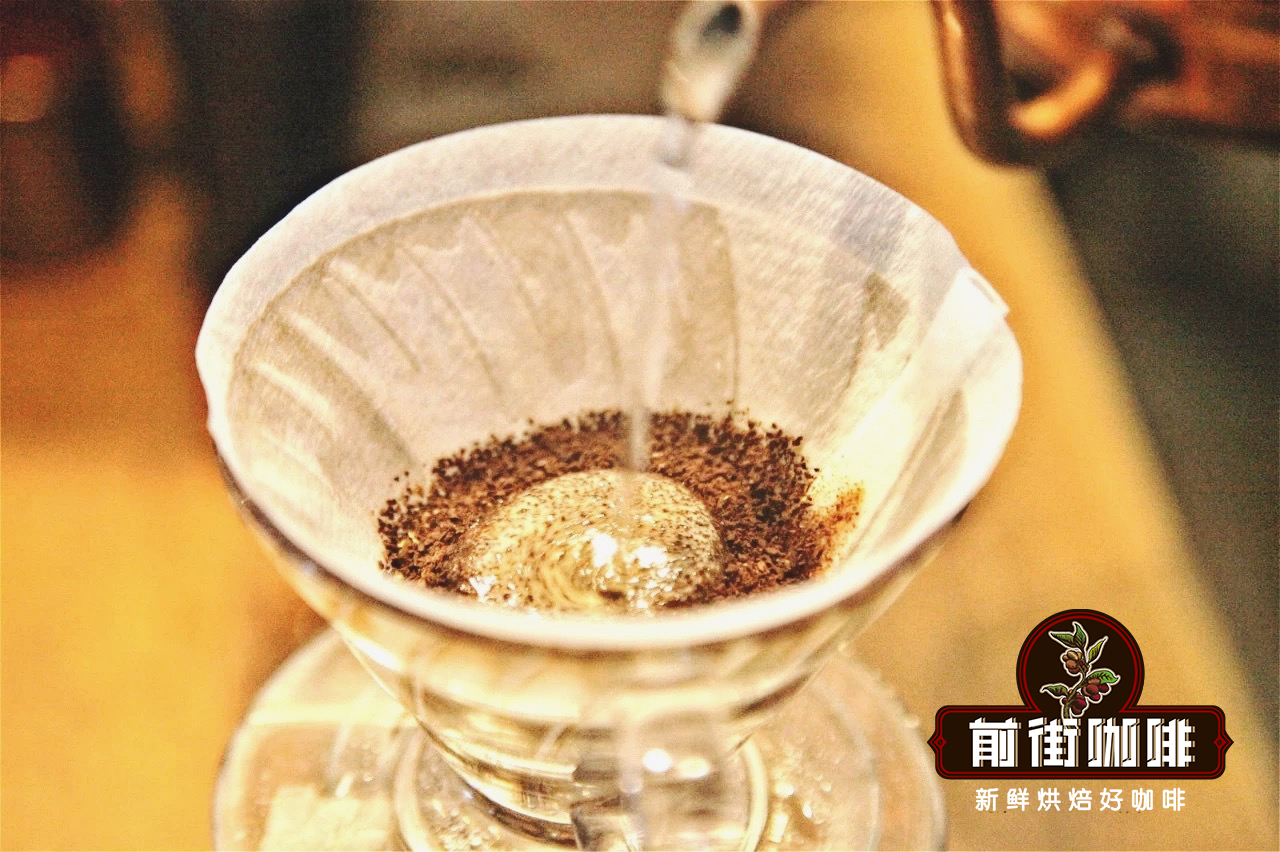
This is the difference between the extraction parameters and taste of Qianjie coffee according to the scaa gold cup extraction theory.
[heavy flavour] 1VOV 101VlV 11, that is, the golden cup criterion of 1RU 12.5mm 1RU 13.5
[moderate taste] 1-12-12-1-13 (I. e. 1-14. 5-1-15. 5)
[refreshing] 1-14-1-1-1-16 (I. e., 1-14-1-1-18. 5 of the Golden Cup Criterion)
The specific brewing amount of coffee beans is 14.5 grams and 15.5 grams of water, which is the easiest to reach the golden range of 18% 22% gold cup extraction rate and 1.15% 1.35% concentration.
So here in front street coffee, it is recommended that you use the error-prone 1:15 powder-to-water ratio when brewing this Guatemala Antigua coffee bean.
4. Washing and cooking technique
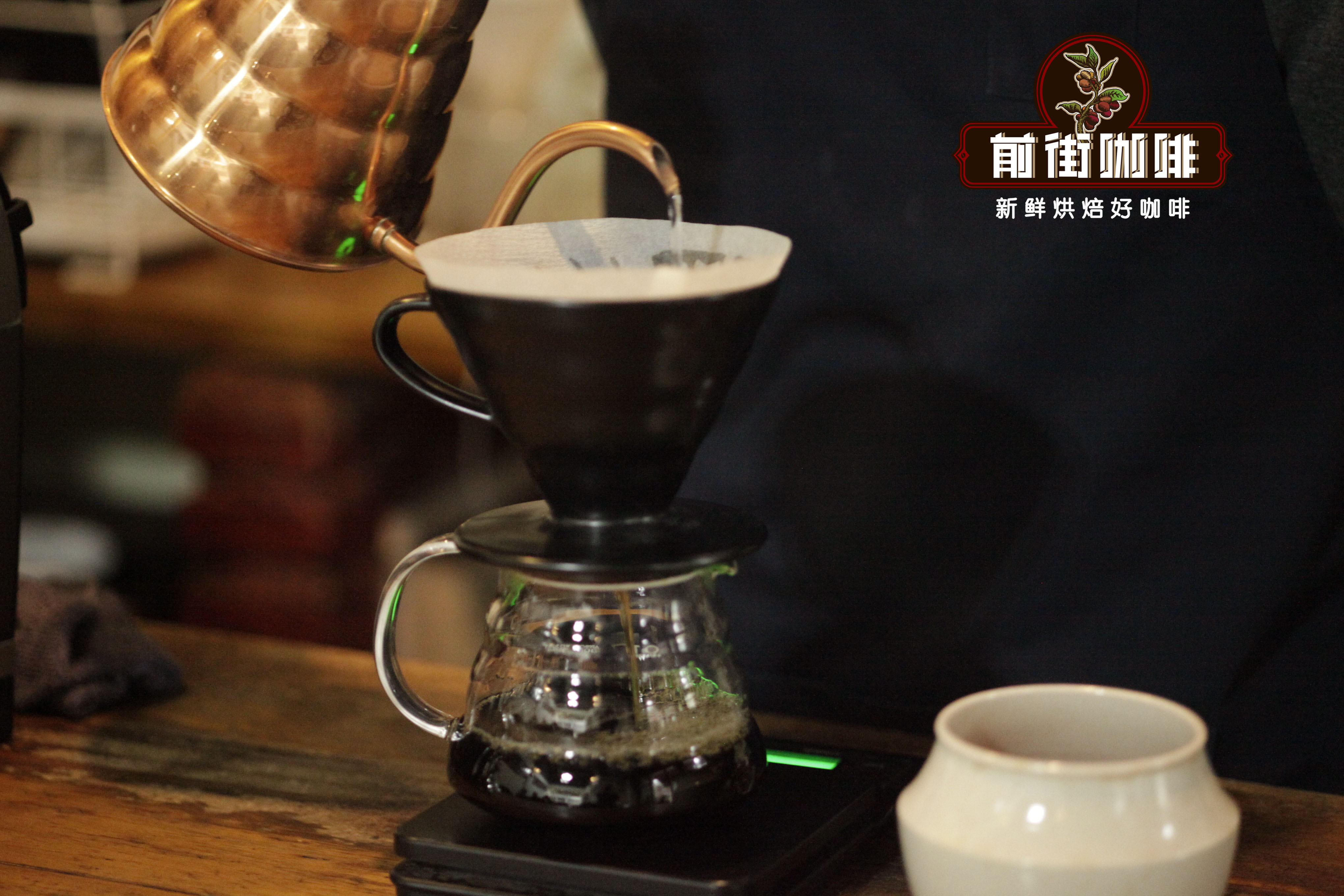
Finally, hand punching techniques are also very important, such as three-stage style, one-step flow, drip-by-drop style, and so on. Here, Qianjie Coffee recommends that beginners use three-stage water injection to brew, because this method is suitable for light-roasted, medium-and medium-roasted coffee beans. The segmented extraction method of three-stage water injection can clarify the flavor of the front, middle and back of the coffee, and can ensure the flavor of the coffee.
For example, Qianjie coffee has also been mentioned above that brewers need to pour water with appropriate temperature and capacity into the coffee powder for coffee liquid extraction in order to extract a cup of delicious coffee. after all, hand-brewed coffee can also be called an art. for example, cooking a dish not only requires fresh ingredients, but also needs to pay attention to the heat and the skills of the chef. Hand-brewed coffee is no exception. Next, Qianjie Coffee will teach you how to pour water into the three stages of hand-brewed coffee.
Three-stage cooking technique:
First water injection: steaming (to help exhaust)
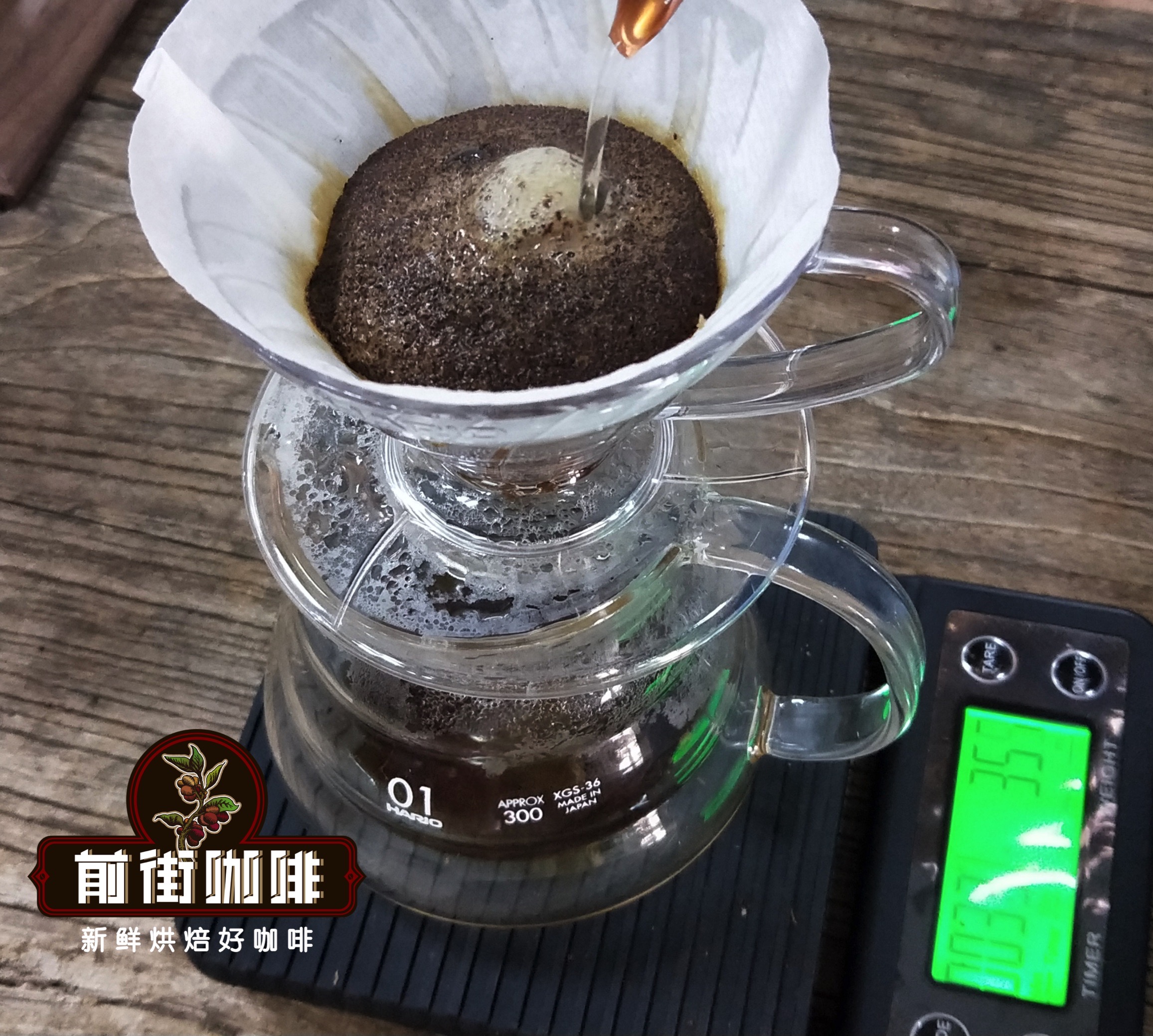
Many coffee lovers do not know the significance of steaming hand-brewed coffee. In fact, steaming is needed because coffee beans will undergo a series of chemical reactions and physical changes during the roasting process from raw beans to cooked beans. After a certain degree of roasting, coffee beans accumulate a lot of gas (mostly carbon dioxide).
Generally speaking, the fresher it is, the closer it is to baking, and the more bubbles usually appear during steaming. Deep-baked beans also release more gas during steaming than shallow baked beans. The coffee beans of Qianjie coffee are freshly roasted, so guests are generally advised to grow beans for three days and let the beans release carbon dioxide first, so that the problem of instability and insufficient extraction can be avoided.
After steaming and discharging the gas, the coffee particles can absorb water evenly, which can make the extraction uniform in the later stage. Good steaming can not only make the coffee powder exhaust quickly, fully and evenly, but also make the coffee powder come into contact with the water quickly, helping the coffee powder to be extracted evenly. These are precisely the purpose and significance of steaming hand-made coffee.
Second water injection
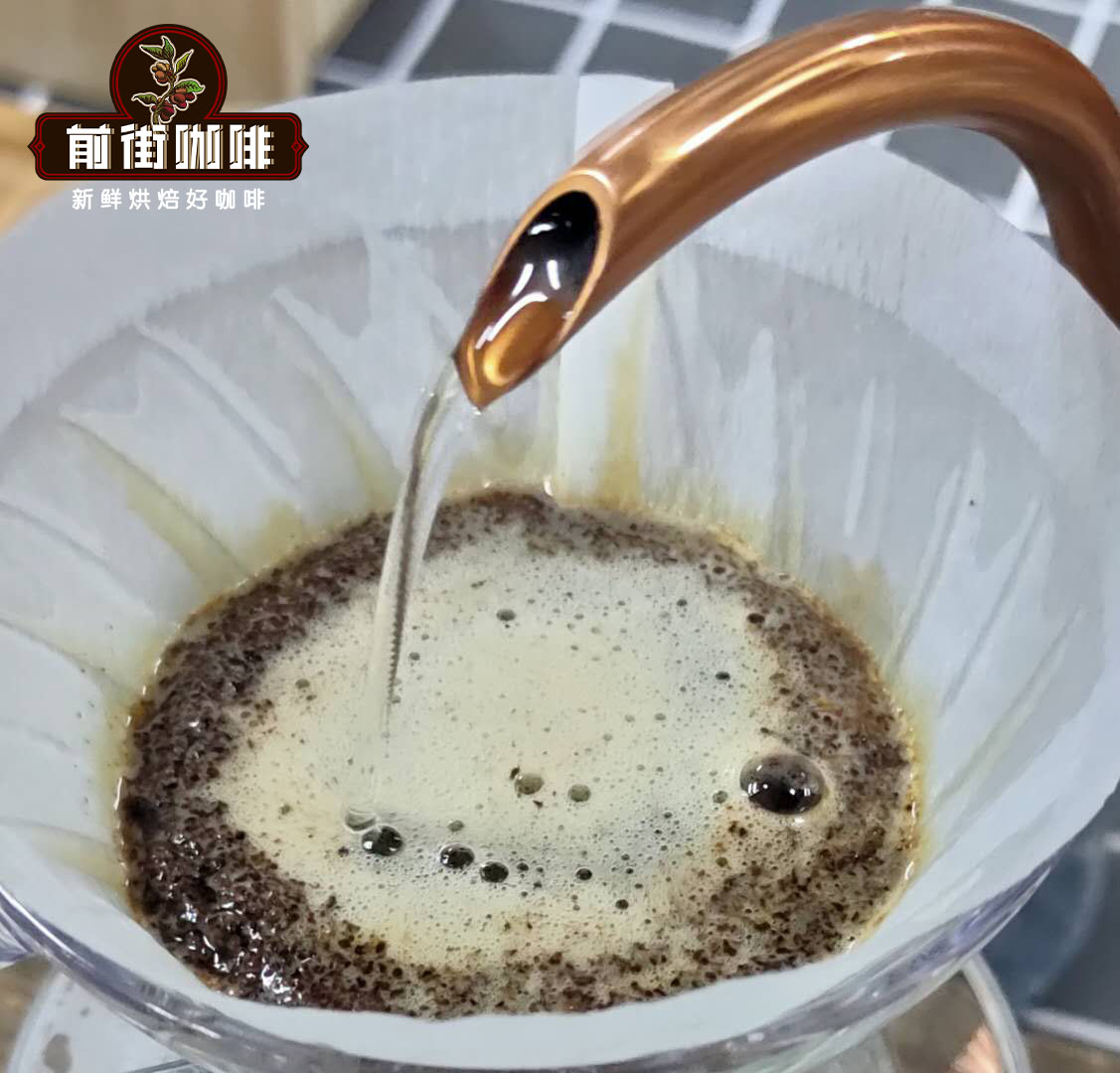
The second water injection starts from the middle, and a small water column is injected into the bottom of the powder layer. in order to concentrate the penetration force of the water column, the range of movement around the circle is small, about the size of an one-dollar coin, and then out. At the beginning of the second water supply, we should pay attention to the amount of water, and try not to exceed the height of the powder layer, that is, when the water column is wound close to the filter paper, the water supply can be stopped.
The third water injection
As the thicker powder layer on the edge of the original filter paper becomes heavier because of the draft, and as the water level falls and becomes thinner, the water level drops to half and the third water injection can be carried out.
From the third water supply, it is necessary to observe the extent of the decline of the water level, also from the center of the water supply circle, the amount of water should not exceed the height of the powder layer, then it will also be observed that the proportion of foam has already occupied the surface, and the third water injection will increase the tumbling of coffee granules, let all the deposited particles tumble, and then dissolve the soluble matter.
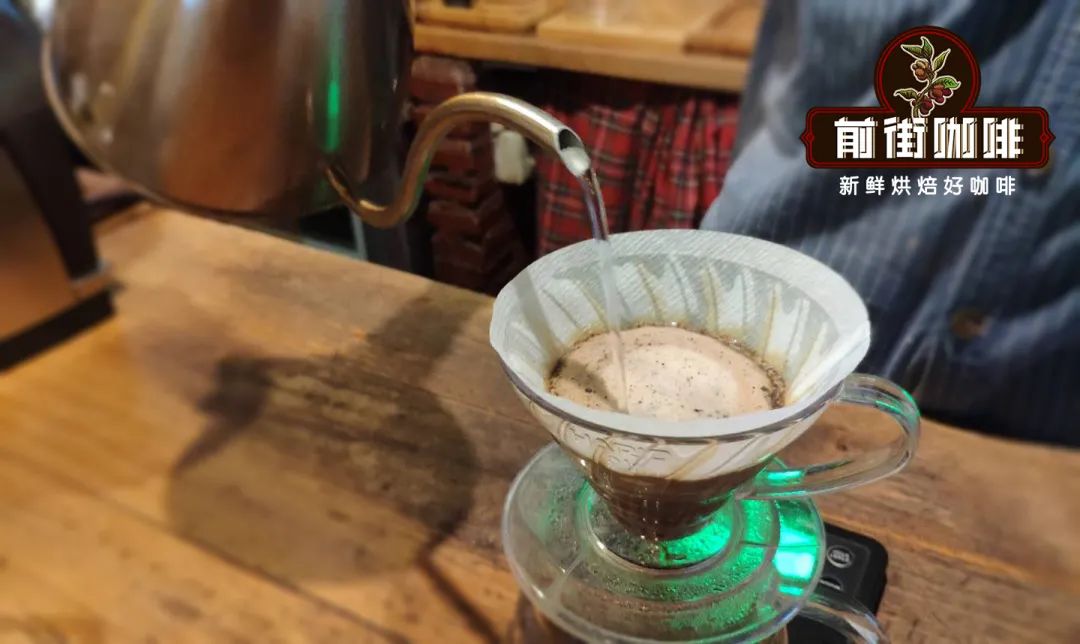
The rolling particles will start to rest because they stop adding water, and at this time they have to rely on the velocity caused by the falling water level to make the coffee particles produce friction, so once the addition of water stops, the coffee powder particles will sink, causing blockage, so pay special attention to the rhythm of adding water. If the water is cut off too many times, it is tantamount to letting the coffee powder particles soak in the water all the time, which will lead to the astringent and miscellaneous taste of the coffee extract at the end.
The above is the three-stage extraction method organized by Qianjie Coffee, and its other name is "segmented" extraction, so Qianjie Coffee will share how to brew this Guatemala Antigua Flower God Coffee Bean.
Data sharing of coffee brewing in Qianjie
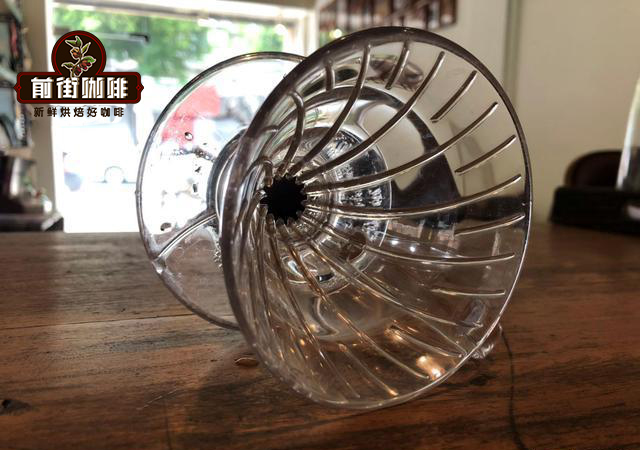
Filter cup: V60 # 01
Water temperature: 90-91 degrees
Powder content: 15g
Ratio of powder to water: 1:15
Degree of grinding: BG6m/ medium fine grinding (No. 20 sieve bowl sieve powder to 80%)
Cooking technique: three-stage extraction
In the first stage, 30 grams of water is injected for 30 seconds, followed by 95 grams (about 125 grams indicated by the electronic scale). The injection is completed in about 1 minute, and the remaining 100 grams are injected at 3 places in the powder layer (about 225 grams shown by the electronic scale) in about 1 minute and 35 seconds. 2: 00 "- 2 × 39" trickle filtration is completed, remove the filter cup and complete the extraction.
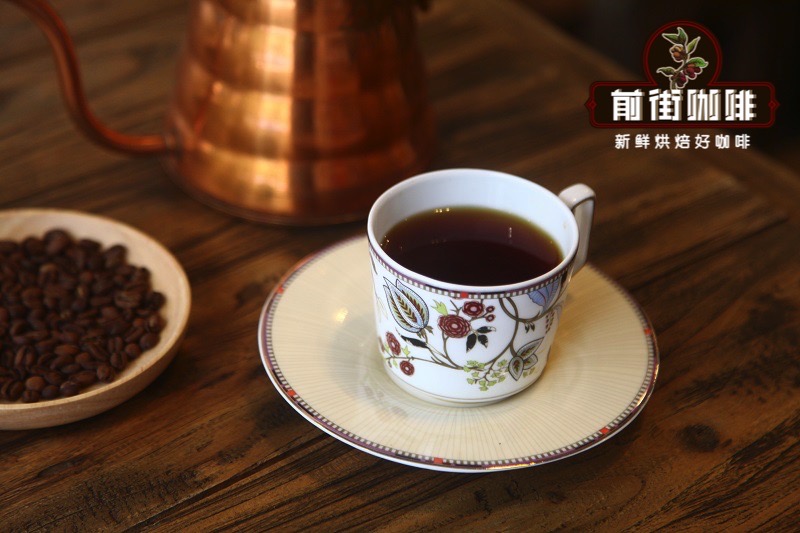
Guatemala Flower God Coffee flavor description: citrus acid, sour juice, rich floral aroma, pleasant sweetness, medium mellow, slight caramel and smoky taste in the back, pure, mild and smooth texture as a whole. the taste is balanced, lively and changeable.
For more boutique coffee beans, please add private Qianjie coffee on Wechat. WeChat account: kaixinguoguo0925
Important Notice :
前街咖啡 FrontStreet Coffee has moved to new addredd:
FrontStreet Coffee Address: 315,Donghua East Road,GuangZhou
Tel:020 38364473
- Prev
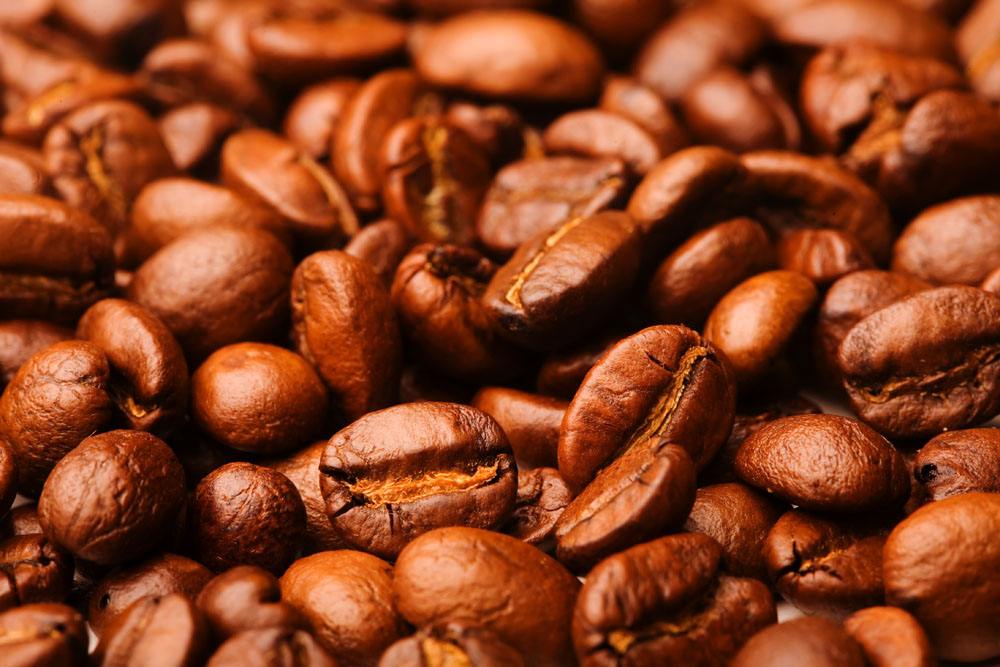
Guatemalan Flower God Coffee. Is Guatemala Flower God Coffee good?
Following caf é (Wechat official account vdailycom) found that the beautiful cafe opened a small shop of Guatemala Flower God Coffee introduction Coffee was really introduced to Guatemala in 1750, was introduced by Father Jesuit, and the coffee industry was developed by German colonists at the end of the 19th century. Today, most of the coffee industry's production takes place in the south of the country. There are seven main coffees in Guatemala.
- Next
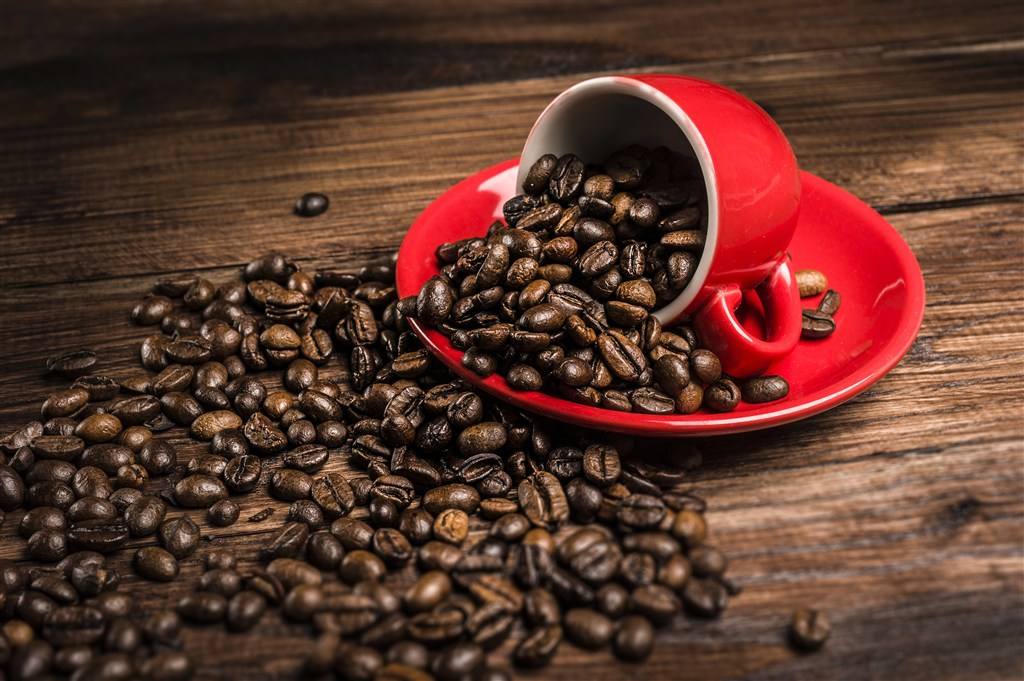
Guatemala Coffee producing area, Guatemala Coffee specific introduction
Following Cafe (official Wechat account vdailycom) found that the Beautiful Cafe opened a small shop of its own. In 1750, Father Jesuit introduced coffee trees to Guatemala, where the coffee industry was developed by German colonists in the late 19th century. Today, most of the coffee industry's production takes place in the south of the country. Coffee production in Guatemala: Madre
Related
- Detailed explanation of Jadeite planting Land in Panamanian Jadeite Manor introduction to the grading system of Jadeite competitive bidding, Red bid, Green bid and Rose Summer
- Story of Coffee planting in Brenka region of Costa Rica Stonehenge Manor anaerobic heavy honey treatment of flavor mouth
- What's on the barrel of Blue Mountain Coffee beans?
- Can American coffee also pull flowers? How to use hot American style to pull out a good-looking pattern?
- Can you make a cold extract with coffee beans? What is the right proportion for cold-extracted coffee formula?
- Indonesian PWN Gold Mandrine Coffee Origin Features Flavor How to Chong? Mandolin coffee is American.
- A brief introduction to the flavor characteristics of Brazilian yellow bourbon coffee beans
- What is the effect of different water quality on the flavor of cold-extracted coffee? What kind of water is best for brewing coffee?
- Why do you think of Rose Summer whenever you mention Panamanian coffee?
- Introduction to the characteristics of authentic blue mountain coffee bean producing areas? What is the CIB Coffee Authority in Jamaica?

